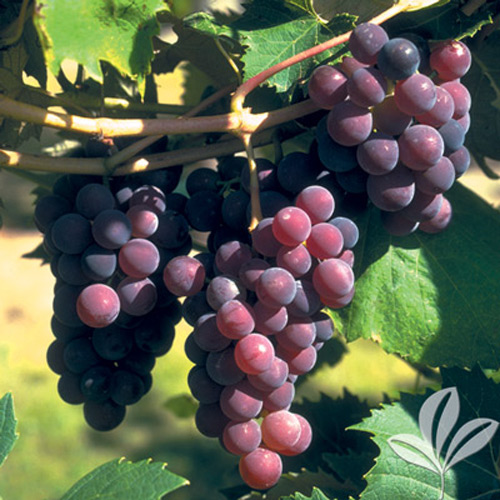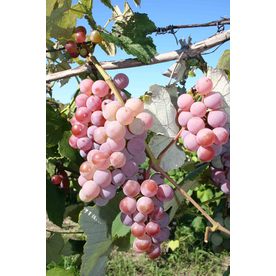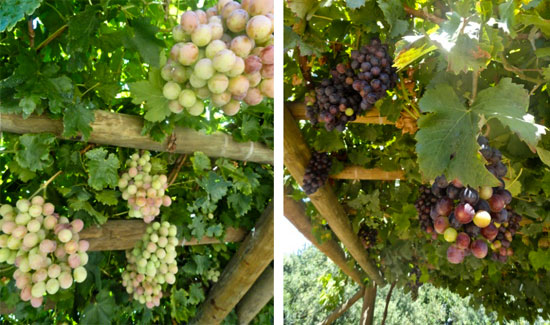Catawba (grape)
Catawba is a red grape that has been marketed since 1823 by John Adlum in the U.S. state of Maryland. Apparently wild seedlings were found around the year 1801 by a gentleman named Murray. As locality an area in Buncombe County near the Catawba River in North Carolina is specified. Some seedlings came into the possession of the General Davy, who increased the seedlings in the years 1807-1816. Some specimens he sent to friends in Maryland, where they were finally noticed by Adlum in the garden of the Scholl family. Adlum had a total of 80 hectares of vineyards and in 1823 he sent Thomas Jefferson a gekelterte from Catawba bottle of wine.
The variety is obviously a hybrid vine, in the genes of Vitis labrusca and wild vines Vitis vinifera are available.
In Brazil, it has developed into an important Rotweinrebe. It is mainly grown in the area of Sao Paulo. In the United States, the Catawba is particularly common in the U.S. states of New York ( → Viticulture in New York) and Arkansas (→ viticulture in Arkansas). It is used there as a table grape, is processed into grape juice and jelly and is also used in the production of sparkling wine and a simple table wine. In Canada, the focus is on the spread of the region of Ontario. Smaller plantings are also known in South Africa.
See the article viticulture in Brazil, viticulture in the United States, viticulture and winemaking in South Africa in Canada and the list of grape varieties.
Ampelographic varietal characteristics
In the ampelography the habit is described as follows:
- The shoot tip is hairy rather starkwollig and has a crimson trace. The young leaves are yellowish green and they are hairy schwachwollig.
- The large leaves are indented five lobes and deep. The petiole is closed, the ends overlap. The blade is serrated blunt. The teeth are set wide in comparison to the varieties. The leaf surface (also called leaf blade ) is vesicular coarse.
- The drum-shaped bunch is medium and dichtbeerig. The roundish berries are large and dark red in color. The berries have a Fox sound.
The Catawba grape ripens about 20 days after Chasselas and therefore one of the mid-late maturing varieties.
Synonyms
The variety Catawba is also under the name of Arkansas, Captraube red, Catawba pink, Catowba Tokay, Cher Kee, Cherokee, Fancher, Francher Kello White, Francher Kells White, Keller's White, Lebanon, Lebanon Seedling, Lichigan, Lincoln, Lincolun, Mammoth Catawba, Meads Sedling, Mecleron, Merceron, Michigan, Muncy, Muncy pale red, red Munipale, Omega, R'd Muncy, Muncy Red, Rose of tennessee, Red Captraube, Saratoga, Singleton, Tekomah, Tokay, Virginia Amber and White catawba known.









